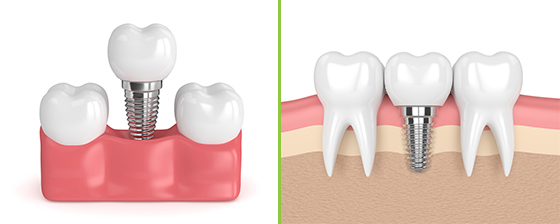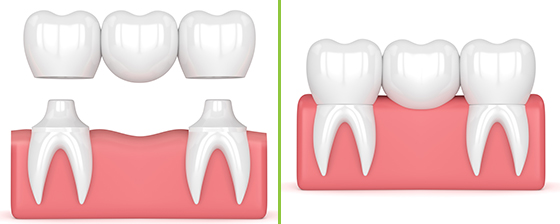Looking for Wisdom Teeth removal?
For information that specifically relates to the extraction of impacted wisdom teeth, please follow the link.
What is tooth extraction, and why may it be necessary?
Tooth extraction is the dental procedure for permanently removing a tooth from its socket in the jaw bone.
At VC Dental, offering prevention-focused treatments is always our first priority. We will make every viable effort to help our patients keep their natural teeth, and extraction is always our last resort. We offer a range of alternative procedures that we will implement wherever possible, including:
However, the above procedures aren’t feasible in every case. Sometimes tooth extraction is necessary.
Reasons why tooth extraction may be necessary include:
- Severe tooth decay, where the tooth is not able to be restored.
- Impacted wisdom teeth.
- Orthodontic treatment (e.g. braces). If a tooth has erupted abnormally, or there is inadequate space, a tooth may need to be extracted before the other teeth can be correctly aligned/ straightened.
- Periodontal disease. Also called Periodontitis or gum disease, this is caused by bacterial infection that damages the connective tissues between teeth and gums, and results in bone loss. If the infection spreads too far without intervention and maintenance, extraction becomes necessary.
- Fractured or cracked teeth.
- Advanced infection (where alternative treatment isn’t viable).
- Major traumatic injury including broken teeth.
- Vertical root fractures.
- Failure of root canal therapy.
Rest assured that modern tooth extraction can be carried out comfortably, quickly and efficiently. We offer a range of anaesthetic and sedation options to ensure you have a comfortable and pain-free procedure.
Types of tooth extractions
There are two methods of tooth extraction: simple and surgical.
Simple Extractions
A simple tooth extraction is performed when the tooth is able to be removed completely intact (in one piece). The process is quite straightforward and involves the use of dental instruments to remove the tooth. This procedure is generally well tolerated under local anaesthetic (to numb the affected area) where you will feel pressure, but not any pain. However, we do offer stronger sedative options if desired.
Surgical Extractions
A surgical extraction is performed when the tooth is either too broken-down to remove whole, or otherwise cannot be removed intact. It is a more complex procedure which may include minor oral surgery. It involves raising the gum to expose the whole tooth (and can require the careful removal of some surrounding bone), before the tooth is removed in fragments and the incision is closed with sutures. Whilst this procedure can also be performed pain-free under local anaesthetic, we offer a range of sedation options to ensure you are comfortable and relaxed.
Sedation Options
We offer a range of sedation options including local anaesthetic, inhalation sedation (‘happy gas’), oral sedatives, and sleep dentistry (IV sedation) which allows you to be more heavily sedated.
All of our sedation options will be explained in detail so the most suitable option can be chosen for your personal circumstances. No matter how anxious you are, our understanding team will work with you to ensure your procedure is pain free, and as pleasant and comfortable as possible. For more information about our sedation options, please click here.
Consequences of tooth extraction
Once a tooth has been removed, it is important to consider a replacement solution.
Leaving gaps in the dentition can result in a range of complications and consequences including:
- Bone loss (atrophy), which is the shrinkage and deterioration of the jawbone.
- Loss of biting efficiency.
- Increased biting load on surrounding teeth as the natural force distribution is altered. This can lead to tooth mobility, cracking and increased wear of the biting surface on the remaining teeth and restorations.
- Increased frequency of restorations/fillings, due to increased wear on the biting surfaces.
- Aesthetic impact on smile.
Bone loss (atrophy) is a serious concern post tooth extraction. Further consequences attributed to bone loss are:
- Drifting movement of the adjacent or opposing teeth (adjacent teeth can ‘sink’ into the empty gap, and if the gap is in the lower jaw the opposing upper teeth can ‘drop’ downwards). This can then cause other teeth to move out of alignment.
- Shrinkage of the gum where the tooth has been removed, which can expose the sensitive surface (dentine) of the surrounding teeth.
Why does bone loss (atrophy) occur?
A special relationship exists between your teeth and your jawbone.
The bone surrounding your teeth is called alveolar bone, and it exists solely to support your teeth and hold them in place. During function (such as biting), the roots of your teeth are constantly stimulating the bone to maintain itself.
When a tooth is removed, the procedure leaves behind a hole in the jawbone where the tooth roots used to be. Initially, the bone will naturally regenerate and fill this hole. However, with the root extracted there is no longer load (biting) forces to stimulate the bone. Over time, the body’s natural response is to begin resorbing the bone in that area (it will shrink and deteriorate) because it is no longer needed to hold the tooth in place. This shrinking process is called atrophy and is a similar process to the atrophy experienced when muscles are no longer used or stimulated.
Unfortunately the amount of bone recession that will take place is unpredictable.
How can we minimise bone atrophy post tooth extraction?
1. Tooth Replacement
The best solution to minimise bone loss after tooth extraction is to replace the tooth.
The best tooth replacement option is a dental implant, as the titanium screw inserted into the jawbone will act as an artificial ‘tooth root’, stimulating the jawbone and minimising ongoing bone loss over time.
2. Socket Preservation
Depending on the chosen replacement procedure, we may also perform a ridge (bone) preservation grafting procedure (also called socket preservation) at the time of your extraction. This involves filling the empty jawbone socket with a bone substitute immediately after the tooth has been extracted. It is a minor and quick procedure that will assist the body’s initial socket regeneration process. It will preserve the majority of the bone shape and volume during healing, and will allow the gums and bone contour to stay in their optimum form and shape. It can also often prevent the need for major bone grafting later on (for example if the patient chooses to replace the tooth at a later date).
At VC Dental we use Geistlich Biomaterials, which are the number 1 products in regenerative dentistry1. More information about this company can be found at the bottom of this page – click here to go there now.
Whilst this procedure does assist the initial bone regeneration in the socket, the slow progressive shrinking that happens over time without a root system stimulating bone growth is only ever sufficiently minimised by replacing the missing tooth with a dental implant.
Tooth replacement options following extraction
There are three main tooth replacement options following extraction:
1. Dental implants

As mentioned above, the superior replacement option is a permanent dental implant.
They are the most functional replacement option, and will look and feel just like a natural tooth. A dental implant is made up of a titanium screw which is inserted into the jawbone to give you similar support and anchorage of a natural root system, and a ceramic tooth colour-matched dental crown which will be custom designed to match your existing teeth.
Dental implants minimise ongoing bone loss in your jaw. The titanium rod of a dental implant is anchored directly into the jawbone and, through the process known as osseointegration, promotes bone growth and becomes embedded within the bone. Once the implant has become part of the jaw bone, it stimulates the bone internally just like the natural root that was lost in the extraction. This mimics the previous tooth, root and bone relationship.
For more information on dental implants, please click here.
2. Dental bridges

Another tooth replacement option is a dental bridge.
A dental bridge is a connection of colour-matched ceramic crowns, custom designed to match your existing teeth. Instead of being attached to a titanium screw in the jawbone (as in the case of a dental implant), a bridge is anchored to the adjacent natural teeth. Whilst this procedure doesn’t replace the missing root structure of the natural tooth, the crown will function and aesthetically look like a natural tooth.
For more information on dental bridges please click here.
3. Dentures

Dentures can also be used to replace missing teeth. Depending on how many teeth are missing we can consider partial dentures, full dentures or implant-supported dentures. If you already have an existing denture, missing teeth can often be added to the denture.
For more information about dentures please click here.
Geistlich Biomaterials – Our socket preservation products
At VC Dental it is important to us that our patients know what products are being used in their procedures.
For socket preservation (bone grafting) procedures post tooth extraction, we use Geistlich Pharma Biomaterials. This Switzerland-headquartered company (with an Australian affiliate) has over 165 years of expertise2 and their products are Australian Red Cross blood donor approved3.
We use their state-of-the-art bone substitute product4 which is the leading natural bone substitute in regenerative dentistry worldwide5, and their barrier product which is the leading collagen membrane for oral tissue regeneration6.
Direct information from Geislitch below7:
Dental treatments are a matter of trust: our experience and expertise is something you can rely on.
Biomaterials from Geistlich Pharma AG are the most frequently used materials in regenerative dentistry throughout the world1. Over 10 million patients worldwide have been treated with them.
- Geistlich products are high quality Swiss biomaterials.
- They were evaluated in more than 1,000 studies from countries all over the world.
- Meticulous selection of raw materials, together with a strictly controlled manufacturing process, allows Geistlich biomaterials to conform to high safety requirements and ensures high tolerability.
- The safety has been assessed by international and national regulatory bodies.”
“All Geistlich products available in Australia are registered with the TGA and Bio-Oss® has been included in the Blood Donor Selection Guidelines allowing patients to donate blood to the Australian Red Cross Blood Service.”8
Geistlich Australia
Our Offers
Save money! View our current patient offers.
Free Dental Implant Consultation
Get procedural direction of care and cost estimates to see if this is the treatment option for you
Free
Free Dental Surgeon Consultation
Get broad-based advice regarding your specific concerns, free of any obligation to continue treatment.
Free
References
- Geistlich Biomaterials Patient Information brochure “What happens after tooth extraction? : Extraction Sockets” 009PATIENTEXTRA/1701
- Geistlich Biomaterials Patient Information brochure “What happens after tooth extraction? : Extraction Sockets” 009PATIENTEXTRA/1701
- Geistlich Biomaterials Patient Information brochure “What happens after tooth extraction? : Extraction Sockets” 009PATIENTEXTRA/1701
- https://www.geistlich.com.au/en/dental/bone-substitutes/geistlich-bio-oss/user-benefits/
- https://www.geistlich.com.au/en/dental/bone-substitutes/geistlich-bio-oss/user-benefits/ ; 1: iData Research Inc., US Dental Bone Graft Substitutes and other Biomaterials Market, 2015.; 2: iData Inc., European Dental Bone Graft Substitutes and other Biomaterials Market, 2015.
- https://www.geistlich.com.au/en/dental/membranes/geistlich-bio-gide/user-benefits/
- https://www.geistlich.com.au/en/patients/separator/dental-regeneration/geistlich-biomaterials/
- https://www.geistlich.com.au/en/about-us/about-geistlich/about-geistlich-australia/
Please note, any surgical or invasive procedure carries risks. Before proceeding you should obtain personal advice from an appropriately qualified health practitioner.




